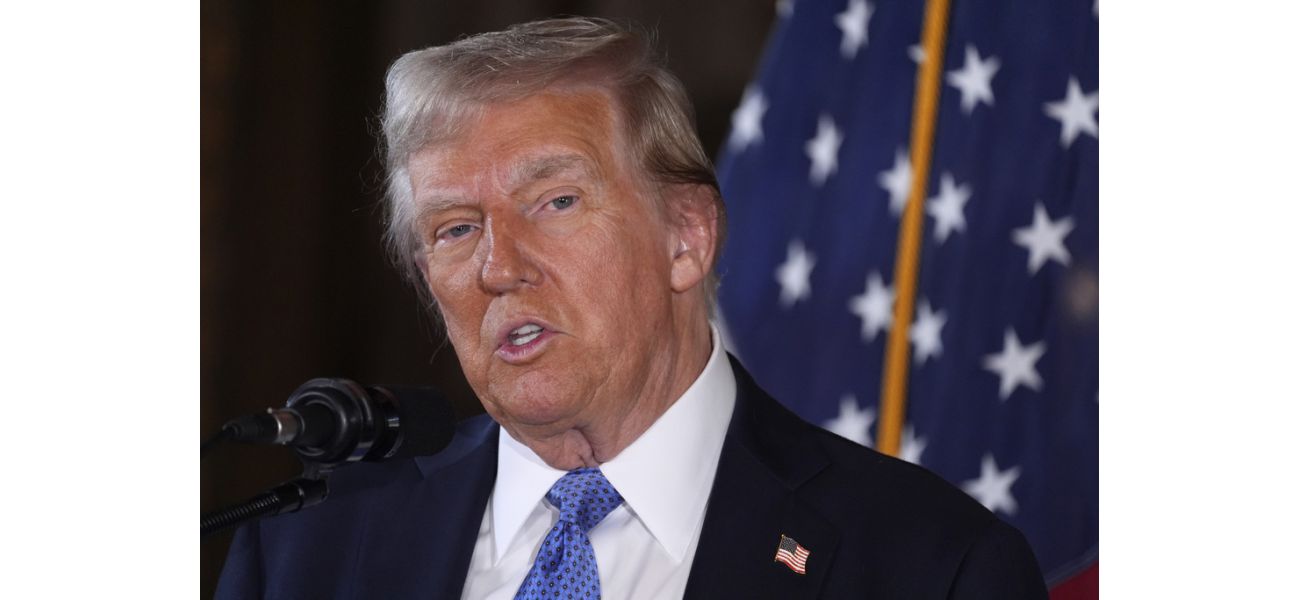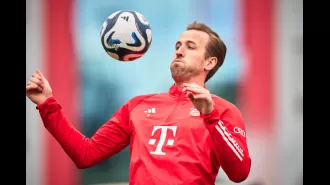The US House prepares to vote on a measure to stop the government from shutting down.
GOP discussing next steps after Trump reaffirms desire for debt ceiling increase in any deal.
December 20th 2024.

As the clock ticked closer to midnight on Friday night, the possibility of a government shutdown loomed over the United States. In a last-ditch effort to avoid this, House Speaker Mike Johnson presented a new plan that would provide temporary funding for federal operations and disaster relief. However, this plan did not meet President-elect Donald Trump's demand for a debt limit increase, which he had been insisting on since the early hours of the morning.
Behind closed doors, House Republicans were discussing their next steps. Trump's firm stance on including a debt ceiling increase in any deal had put them in a tough spot. In a social media post, he had warned that if his demand was not met, he was ready to let the government shutdown begin immediately. Johnson, however, remained optimistic as he left the meeting, assuring that there would be no government shutdown.
A vote was scheduled for Friday evening, but the outcome was uncertain. Johnson did not reveal the details of the new plan, but lawmakers revealed that it included funding the government at current levels until March, along with $100 billion for disaster aid and $10 billion for agricultural assistance. Trump's demand for a debt ceiling increase was no longer a part of the plan, as GOP leaders had decided to address it in the new year alongside their tax and border packages.
The news of this change did not sit well with Trump's ally, Elon Musk, who questioned whether this was a Republican or a Democrat bill. It seemed almost impossible for Trump's last-minute pressure to be met. Johnson was aware that he did not have enough support within the GOP majority to pass any package, as many Republicans were in favor of cutting federal government spending rather than increasing it.
In a race against time, Johnson was in talks with Democratic Leader Hakeem Jeffries, whose party's support was needed to ensure the passage of any deal. However, Democrats were not too keen on Johnson's efforts, as he had previously gone back on their original bipartisan compromise.
Trump, who was yet to be sworn into office, was flexing his power and influence over Congress from Mar-a-Lago, where he was joined by his billionaire ally, Elon Musk. With Musk heading the incoming administration's Department of Government Efficiency, Trump was determined to push the debt ceiling debate out of the way before his return to the White House.
The federal debt limit was set to expire on January 1, and Trump did not want to start his term with tough negotiations in Congress to increase the nation's borrowing capacity. This gave Democrats, who would be in the minority next year, a bargaining chip. Trump continued to post on social media, demanding that Congress get rid of or extend the debt ceiling to 2029, or else no deal would be made.
Johnson was working tirelessly behind closed doors to prevent a government shutdown, but his power had its limits. Trump and Musk, along with their social media army, had already expressed their opposition to the original plan presented by Johnson. This plan, a 1500-page bipartisan compromise that included disaster aid but not the debt ceiling, was rejected by most Democrats and Republicans.
On Thursday, a second plan backed by Trump, a slimmed-down 116-page bill with a two-year debt limit increase, failed to pass. This was a monumental defeat, as it was deemed an unserious effort by most Democrats and was also opposed by Republicans who did not want to add to the nation's debt.
On Friday morning, Vice President-elect JD Vance arrived early at the Capitol to join a group of the most hardline Republican holdouts from the House Freedom Caucus, who were meeting with Johnson. During a lunchtime meeting with other House Republicans, Johnson asked for a show of hands to determine the path forward.
Government workers had been warned to prepare for a shutdown, which would mean millions of employees, including members of the military, would not receive their paychecks during the holiday season. House Democratic Leader Hakeem Jeffries commented on the situation, calling it "the MAGA swamp," and blaming the Republicans for putting the country on the brink of a shutdown that would harm the economy and working-class Americans.
Jeffries was in communication with Johnson regarding the path forward, while in the Senate, which was currently controlled by Democrats, discussions were underway to push forward the original bipartisan compromise. This would be a difficult task, but not impossible. Senate Majority Leader Chuck Schumer referred to this agreement as the quickest, simplest, and easiest way to keep the government open and provide emergency aid to the American people.
Senator Patty Murray, who played a key role in the original deal, stated that they were ready to stay through Christmas to ensure that Elon Musk did not run the government. However, she also expressed her disappointment that the Republicans had blown up the deal, and insisted that they stick to the bipartisan agreement.
In his final weeks in office, President Joe Biden had played a less public role in the debate, which had drawn criticism from Trump and Republicans who were trying to shift the blame onto him. White House press secretary Karine Jean-Pierre stated that Biden had been in discussions with Schumer and Jeffries, but ultimately, it was up to the Republicans to fix this situation.
Johnson was facing an uphill battle as he tried to keep the government running, appease Trump, and save his own job. His re-election as speaker was the first vote of the new Congress, which was set to convene on January 3. He would need the support of almost every single House Republican from his razor-thin majority to retain his position, while Democrats would vote for Jeffries.
Johnson's precarious position was evident as Trump's ally, Steven Bannon, took the stage at the conservative AmericaFest confab and called for his removal. Bannon's words were met with cheers from the crowd, to which he responded with a smile, stating that these were Trump's people.
Behind closed doors, House Republicans were discussing their next steps. Trump's firm stance on including a debt ceiling increase in any deal had put them in a tough spot. In a social media post, he had warned that if his demand was not met, he was ready to let the government shutdown begin immediately. Johnson, however, remained optimistic as he left the meeting, assuring that there would be no government shutdown.
A vote was scheduled for Friday evening, but the outcome was uncertain. Johnson did not reveal the details of the new plan, but lawmakers revealed that it included funding the government at current levels until March, along with $100 billion for disaster aid and $10 billion for agricultural assistance. Trump's demand for a debt ceiling increase was no longer a part of the plan, as GOP leaders had decided to address it in the new year alongside their tax and border packages.
The news of this change did not sit well with Trump's ally, Elon Musk, who questioned whether this was a Republican or a Democrat bill. It seemed almost impossible for Trump's last-minute pressure to be met. Johnson was aware that he did not have enough support within the GOP majority to pass any package, as many Republicans were in favor of cutting federal government spending rather than increasing it.
In a race against time, Johnson was in talks with Democratic Leader Hakeem Jeffries, whose party's support was needed to ensure the passage of any deal. However, Democrats were not too keen on Johnson's efforts, as he had previously gone back on their original bipartisan compromise.
Trump, who was yet to be sworn into office, was flexing his power and influence over Congress from Mar-a-Lago, where he was joined by his billionaire ally, Elon Musk. With Musk heading the incoming administration's Department of Government Efficiency, Trump was determined to push the debt ceiling debate out of the way before his return to the White House.
The federal debt limit was set to expire on January 1, and Trump did not want to start his term with tough negotiations in Congress to increase the nation's borrowing capacity. This gave Democrats, who would be in the minority next year, a bargaining chip. Trump continued to post on social media, demanding that Congress get rid of or extend the debt ceiling to 2029, or else no deal would be made.
Johnson was working tirelessly behind closed doors to prevent a government shutdown, but his power had its limits. Trump and Musk, along with their social media army, had already expressed their opposition to the original plan presented by Johnson. This plan, a 1500-page bipartisan compromise that included disaster aid but not the debt ceiling, was rejected by most Democrats and Republicans.
On Thursday, a second plan backed by Trump, a slimmed-down 116-page bill with a two-year debt limit increase, failed to pass. This was a monumental defeat, as it was deemed an unserious effort by most Democrats and was also opposed by Republicans who did not want to add to the nation's debt.
On Friday morning, Vice President-elect JD Vance arrived early at the Capitol to join a group of the most hardline Republican holdouts from the House Freedom Caucus, who were meeting with Johnson. During a lunchtime meeting with other House Republicans, Johnson asked for a show of hands to determine the path forward.
Government workers had been warned to prepare for a shutdown, which would mean millions of employees, including members of the military, would not receive their paychecks during the holiday season. House Democratic Leader Hakeem Jeffries commented on the situation, calling it "the MAGA swamp," and blaming the Republicans for putting the country on the brink of a shutdown that would harm the economy and working-class Americans.
Jeffries was in communication with Johnson regarding the path forward, while in the Senate, which was currently controlled by Democrats, discussions were underway to push forward the original bipartisan compromise. This would be a difficult task, but not impossible. Senate Majority Leader Chuck Schumer referred to this agreement as the quickest, simplest, and easiest way to keep the government open and provide emergency aid to the American people.
Senator Patty Murray, who played a key role in the original deal, stated that they were ready to stay through Christmas to ensure that Elon Musk did not run the government. However, she also expressed her disappointment that the Republicans had blown up the deal, and insisted that they stick to the bipartisan agreement.
In his final weeks in office, President Joe Biden had played a less public role in the debate, which had drawn criticism from Trump and Republicans who were trying to shift the blame onto him. White House press secretary Karine Jean-Pierre stated that Biden had been in discussions with Schumer and Jeffries, but ultimately, it was up to the Republicans to fix this situation.
Johnson was facing an uphill battle as he tried to keep the government running, appease Trump, and save his own job. His re-election as speaker was the first vote of the new Congress, which was set to convene on January 3. He would need the support of almost every single House Republican from his razor-thin majority to retain his position, while Democrats would vote for Jeffries.
Johnson's precarious position was evident as Trump's ally, Steven Bannon, took the stage at the conservative AmericaFest confab and called for his removal. Bannon's words were met with cheers from the crowd, to which he responded with a smile, stating that these were Trump's people.
[This article has been trending online recently and has been generated with AI. Your feed is customized.]
[Generative AI is experimental.]
0
0
Submit Comment





